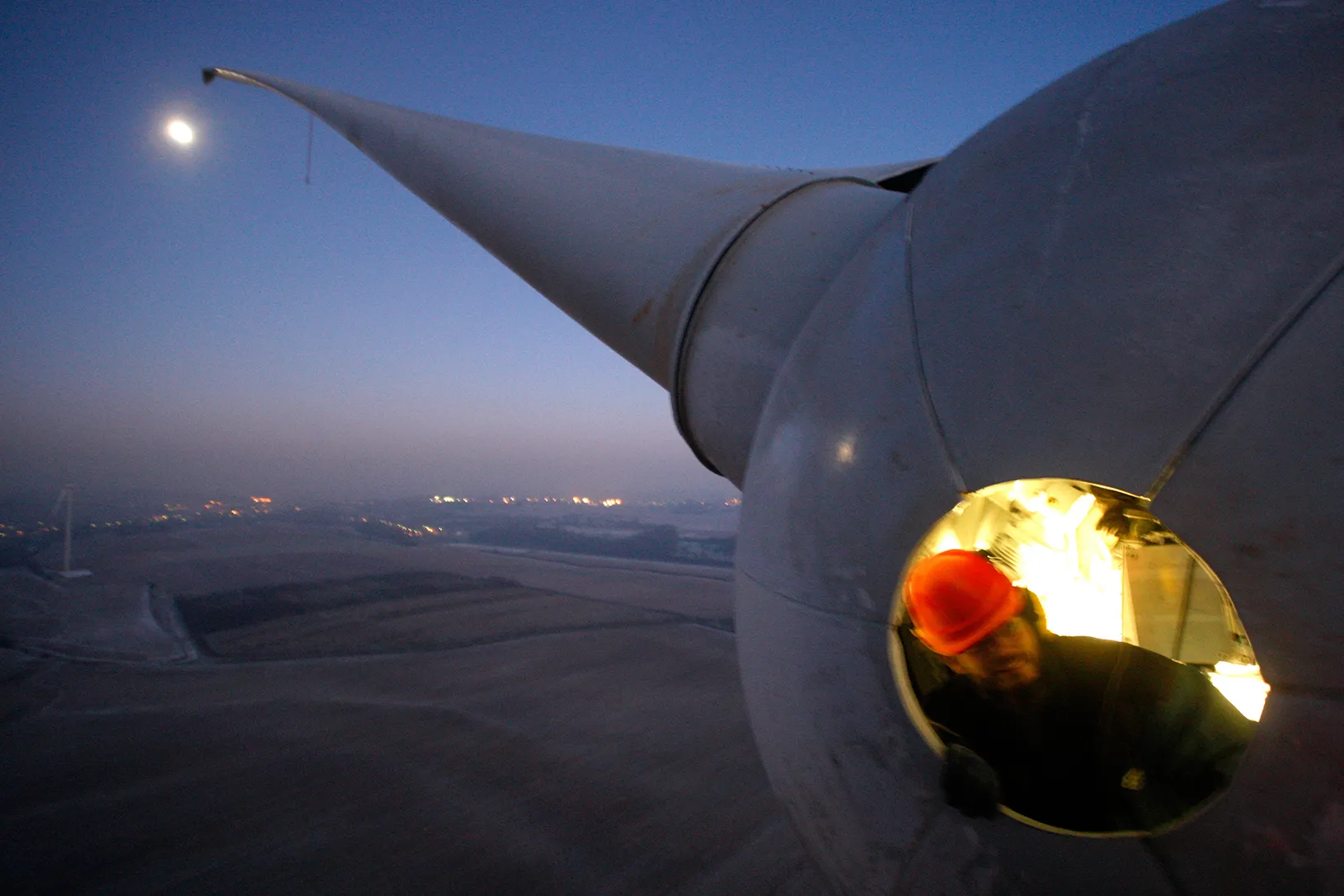A Fresh Look at Renewable Power
Jeffrey Ball, at the Steyer-Taylor Center for Energy Policy and Finance, says it's time for the world's approach to renewables to "grow up."
May 24, 2012

A worker inside a windmill turbine in northern France | REUTERS/Pascal Rossignol
Over the years, as governments and investors have spent big money on renewable power, they have slashed the cost of many renewable technologies. But they have failed to fundamentally change the global energy mix.
Now, with technologies such as wind and solar power having matured, it’s time for the world’s approach to them to grow up too.
What’s needed is an economically hard-nosed approach to renewable power — an unemotional strategy that recognizes that wind and solar have to compete with many other energy solutions and that today’s big energy challenges are fundamentally tougher than those of the past. In particular, that means:
- Rather than picking short-term technological or corporate winners, set a broad direction for a cleaner and more-secure U.S. energy system and then let that newly defined market play out. Elements of that policy: more funding for advanced energy research; prioritizing improvements in energy efficiency, because wasting energy from any source makes no sense; and slapping a price on carbon emissions — though the effectiveness of a carbon price would depend on the details.
- Rationalize the current patchwork of conflicting subsidies for energy sources — a patchwork the U.S. has stitched together over decades. This should include an honest comparison of subsidies for renewable energy and for fossil fuels.
- Restructure renewable-power subsidies to make them more efficient. Today’s U.S. renewable-energy tax breaks aren’t the most efficient means of support. Another option: auction subsidies to companies that agree to produce the largest amount of electricity at the lowest price.
- Simplify the permit process for wind and solar projects, including the installation of transmission lines, to trim costs.
- In the push for “green jobs,” focus not on manufacturing commodity equipment that other countries can make less expensively, but on the higher end of the market, developing next-generation technologies and business models that play to America’s strengths and that have the potential to make wind and solar power truly cost-competitive with fossil fuels.
- Globally, resist the urge to impose tariffs and local-content requirements on renewable-energy equipment, because tough competition, as long as it’s fair competition, will produce the most cost-effective products.
Renewable energy often is debated in almost religious terms — a question of belief or disbelief, of yes or no. But the real question isn’t yes or no; it’s how.
For more, read Tough Love for Renewable Energy in Foreign Affairs.
For media inquiries, visit the Newsroom.
Explore More

New Data on the Quality of ESG Audits Catches Regulators’ Attention

How the Apparel Industry Could Refashion Itself with Sustainability in Mind



